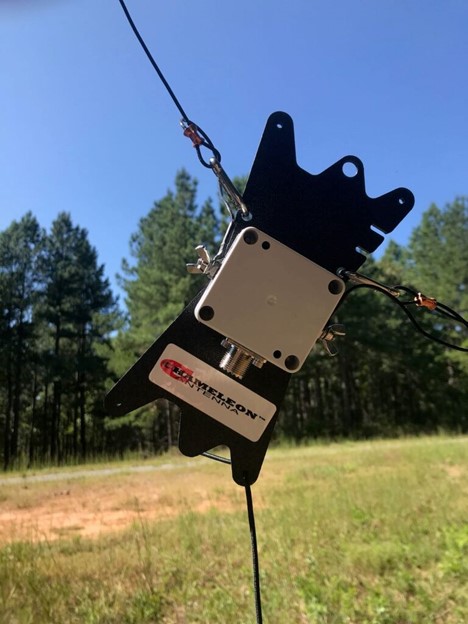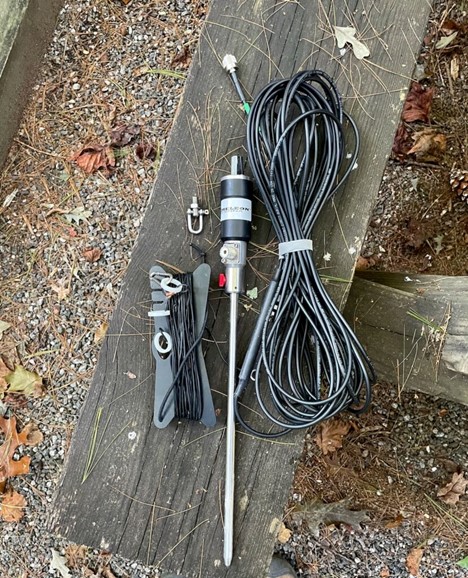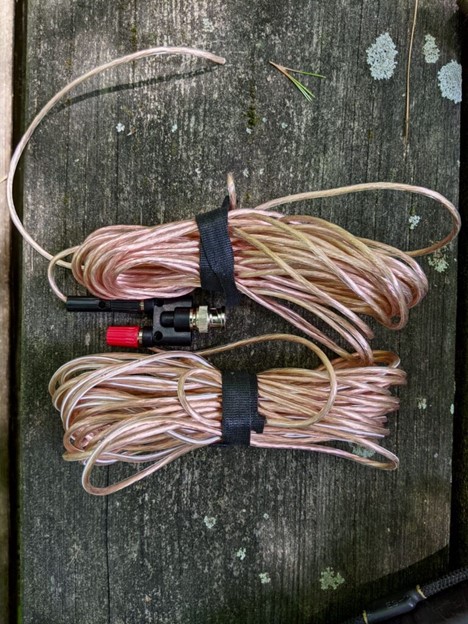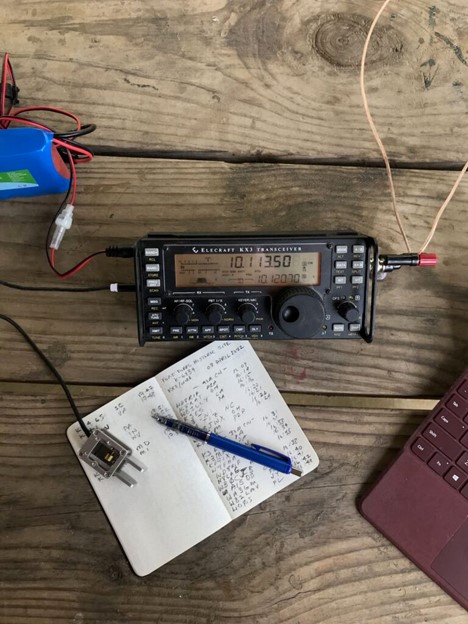In Part One of our series on choosing field-portable HF antennas, we discussed some of the factors involved in making a decision. We looked at the practical side of matching the right antenna for the environment where you’ll be operating.
In addition, we discussed a number of resonant antennas that are popular among field operators.
In Part Two of this series, we’ll take a look at non-resonant multi-band antennas. As with Part One, we obviously can’t cover all of the options out there; it’s simply out of the scope of a web article. That said, we will mention some of the most popular multi-band non-resonant antenna options on the market.
Multi-Band, Non-Resonant Antennas
As the name implies, some antennas are designed to not be resonant on any one band but be within an easy matching range for multiple bands. These are non-resonant antennas, so to use them you will need some sort of antenna tuner/transmatch to obtain a proper impedance match.
Non-resonant antennas are often overlooked by operators who believe they lack the efficiency of a resonant antenna. That’s partially true, as in cases where every watt must count, but I would argue that the advantages and frequency agility of non-resonant antennas compensate for any inherent inefficiencies.
Non-resonant antennas are typically more portable–shorter and more compact–than comparable resonant antennas.
Of course, an antenna tuner (ATU) is required to find acceptable impedance matches across the frequency range of non-resonant antennas. In Part Three, we’ll take a deeper dive into the world of ATUs and discuss whether they’re even a necessary tool (hint: I believe they are, and I’ll explain why).
That said, many modern transceivers come with a built-in ATU, especially those designed to be taken to the field (think the Icom IC-7300, Yaesu FT-710, Kenwood TS-590SG, and a whole host of QRP portables). If you have a built-in ATU, I’d strongly suggest adding a non-resonant antenna to your field arsenal.
Let’s start by taking a look at a few of my favorite non-resonant antennas.
Random Wire Antennas
The most popular non-resonant antenna is the simple random wire antenna. Most of these employ a 5:1 or 9:1 matching unit so that antenna tuners can bring the impedance down to acceptable levels across the bands the antenna was cut to cover. In general, the longer the random wire, the more efficiently it will operate on the lower bands.
One of my favorite configurations is a 9:1 matching unit paired with a 31-foot radiator and a 17- foot counterpoise that I simply lay on the ground. All of my ATUs will easily match this antenna from 40 to 6 meters. Some of my wider-range ATUs can match it on 60 meters. The counterpoise isn’t necessary since this end-fed antenna will use the coax shield as a counterpoise.
I have a much longer Chameleon random wire antenna that will even match down to 160M, and I’ve made “top band” contacts with it in the field in the late evening. That said, random wire antennas cannot defy the laws of physics. On lower bands like 160M they become quite inefficient–even if a suitable match is found–because the radiator simply isn’t long enough.

Chameleon EMCOMM-III Portable HF Antenna
Still, their relative inefficiency doesn’t mean that you can’t make contacts with them.
While it’s not difficult to build a 5:1 or 9:1 random wire antenna, there are some excellent models on the market ready to deploy right out of the package. If building your own, however, keep in mind that there are some radiator lengths to avoid; check out this article to discover some of the best (and worst) random wire lengths. I find that for 40-6 meters, 31 feet is an ideal radiator length.
Sample random wire antennas:
Non-Resonant Telescoping Vertical Antennas
In Part One we mentioned resonant antennas and how useful they can be in the field. Non-resonant, portable telescoping vertical antennas enjoy many of the same characteristics of resonant verticals, but they’re much easier to use on multiple bands and enjoy a high level of frequency agility that resonant verticals lack. Of course, there’s a loss of efficiency, but again, I believe the convenience factor and speed of deployment compensate for this.
It was through Chameleon Antennas that I first started using multi-band vertical antennas. To this day, the CHA MPAS Lite is one of my most frequently used portable antennas. On site, I simply assemble the antenna by attaching the whip to the matching unit, then the matching unit to the ground spike, at which point you can connect a counterpoise wire to the ground lug. Plunge the ground spike into the soil, extend the whip, and unfurl the counterpoise to about 20-25 feet to deploy the antenna. I can set up the MPAS Lite in under two minutes without breaking a sweat. Indeed, during multiple park roves I’ve even kept the entire antenna assembled in the car. When I reach the next site, I simply plunge the antenna in the ground and extend the whip. Twenty seconds later, I’m on the air.

Chameleon MPAS Lite Modular Portable Antenna System Waiting to be Deployed

Chameleon MPAS Lite non-resonant vertical set up in the field
The MPAS 2.0 is similar to the MPAS Lite except the 2.0 has fiberglass sections that are collapsible, much like tent poles. The MPAS 2.0 is also a bit taller.
I’ve been incredibly pleased with both of these antennas. On the air, I can hop to any desired frequency, hit the ATU button, and start transmitting. It’s so simple and speedy.
Recently, I also have taken the new Chelegance MC-750 vertical to the field and have been very pleased with it. The Chelegance has a very compact form-factor and four counterpoises that are easily inserted in the base of the antenna. For 40 meters, there’s an additional coil (included) that must be used. This antenna also comes with an excellent purpose-made carry case in which all the included components are organized nicely. While an ATU helps with quick matches, in a pinch you can adjust the whip to resonance on the higher bands. The whip even has printed extension positions to make the process easier.
I’ve seen homebrew multi-band verticals that are simply amazing, but I’ll admit this is one antenna design I prefer purchasing from a trusted manufacturer. I don’t personally have the materials to make such an antenna quite as compact, rugged, and versatile. I have built similar designs with wire using a telescoping mast for support, however.
Two 28.5-Foot Lengths of Speaker Wire
If you have an antenna tuner with a wide matching range, you might try the most affordable, most accessible random wire antenna I’ve ever known: the simple “speaker wire” antenna.
It’s often referred to as a “speaker wire” antenna because with one length of speaker wire and a BNC binding post adapter, you have a full antenna.
Here’s how. Simply cut a length of speaker wire (I like 28.5 linear feet), then split the two sections of the two-part wire along the seam so that you have two individual wires. Strip ¼” off the ends of both wires. Tie a small loop on the end of one wire; this will be your radiator that you pull into a tree or up a mast. Connect the radiator to the red binding post of the BNC adapter. Next, connect the other wire to the black post on the BNC adapter; this is your counterpoise which you will simply lay on the ground. You’re ready to work!

Two 28.5-foot lengths of speaker wire
This antenna is so simple I’ve literally built them in the field at the activation site without a tape measure (I did, however, use a standard eight-foot picnic table as a guide).
I’ve activated countless parks and summits with this speaker wire antenna, and I’ll admit, sometimes I do wonder if it outperforms my pricier ready-made antennas.

Elecraft KX2 Transceiver with speaker wire antenna for POTA activation
To ATU or not to ATU?
Non-resonant antennas require an ATU for proper operation. Some field operators like to keep their gear as minimal and simple as possible and, thus, stick with resonant antennas instead. I believe, however, every ham that operates in the field should have some sort of ATU at their disposal.
In the final segment of our series on choosing a portable HF field antenna, we’ll take a closer look at antenna tuners and why you might consider one.

